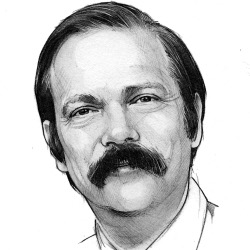
He showed him his name in the obituary listing. "You see," he said, "I am very much alive. I demand a retraction!" The editor replied, "I never retract a story. But I’ll tell you what I’ll do; I’ll put you in the birth announcements and give you a fresh start!"
Communications has had a fresh start; indeed, you hold the seventh issue of the "new CACM." By now, readers should have a fairly solid idea of the new editorial format of Communications. When Ed Koch was mayor of New York City, he was famous for asking, "How am I doing?" It is time for Communications to ask its membership: "How are we doing?"
Over the last few months we have received hundreds of messages from readers offering us their feedback, which was overwhelmingly, though not universally, positive. Over the coming months, however, we will embark on much more detailed reader surveys, trying to get an in-depth sense of what readers like, or do not like, about the current format of this publication.
In previous letters, I discussed the editorial content model in terms of the new sections we’ve created and how the articles fit within. Here, I’d like to offer you a peek behind the scenes, and explain how this content is generated. As you know, Communications is divided into several sections. Analogously, our Editorial Board is divided into several sections, each operating in a somewhat distinct fashion. (See http://cacm.acm.org/communications?pageIndex=5 for a full listing of the Editorial Board.) Readers should also consult http://cacm.acm.org/guidelines/cacm-author-guidelines/ for detailed author guidelines.
Our News section board is co-chaired by Marc Najork and Prabhakar Raghavan, and supported by Senior Editor/News Jack Rosenberger. This team holds monthly brainstorming teleconferences in which they discuss story ideas. They select three stories for each issue, one with a science focus, one with a technology focus, and one with a societal-impact focus. For each story they identify an expert who can serve as initial source for the writer who will ultimately write the story. Jack, who has built up a network of freelance writers, then identifies a writer for each story and puts the writer in contact with the expert. Communications welcomes ideas for news stories; please contact news@cacm.acm.org.
The Viewpoints section board is co-chaired by Susanne Hambrusch, John Leslie King, and J Strother Moore, and supported by Executive Editor Diane Crawford and Managing Editor Thomas Lambert. The Viewpoints section is a forum for the expression of opinion and analysis of a vast range of computing topics, typically of a non-technical nature, and features a combination of regular columns with contributed (solicited and unsolicited) short opinion articles, as well as editorial debates in a point/ counterpoint format. This section is intentionally less "scholarly" than the other sections of the magazine, reflecting opinions and viewpoints that are not always backed by scholarly evidence. Regular Viewpoints columns are handled by section board members, who solicit writers who are experts in their fields. Several of these columnists appear regularly; other columns are shared by different writers. Contributed opinion essays (both solicited and unsolicited) are subject to peer review. The co-chairs do the first round of filtering, selecting for further review only those that are well written, focus on topics of a very broad interest, and offer sound arguments. Selected articles are then assigned to a section board member, who oversees the review process.
The last few pages of each issue of Communications consist of the Last Byte section, which is overseen by Senior Editors Andrew Rosenbloom and Jack Rosenberger. This section alternates content between the Puzzled column, where Peter Winkler presents mathematic brainteasers; Future Tense, where science fiction writers contribute thought-provoking essays; and Q&A, where Leah Hoffman offers brief interviews with computing personalities.
In my next letter, I will describe the editorial model of the four technical sections of Communications: Practice, Contributed Articles, Review Articles, and Research Highlights.
Moshe Y. Vardi, EDITOR-IN-CHIEF



Join the Discussion (0)
Become a Member or Sign In to Post a Comment